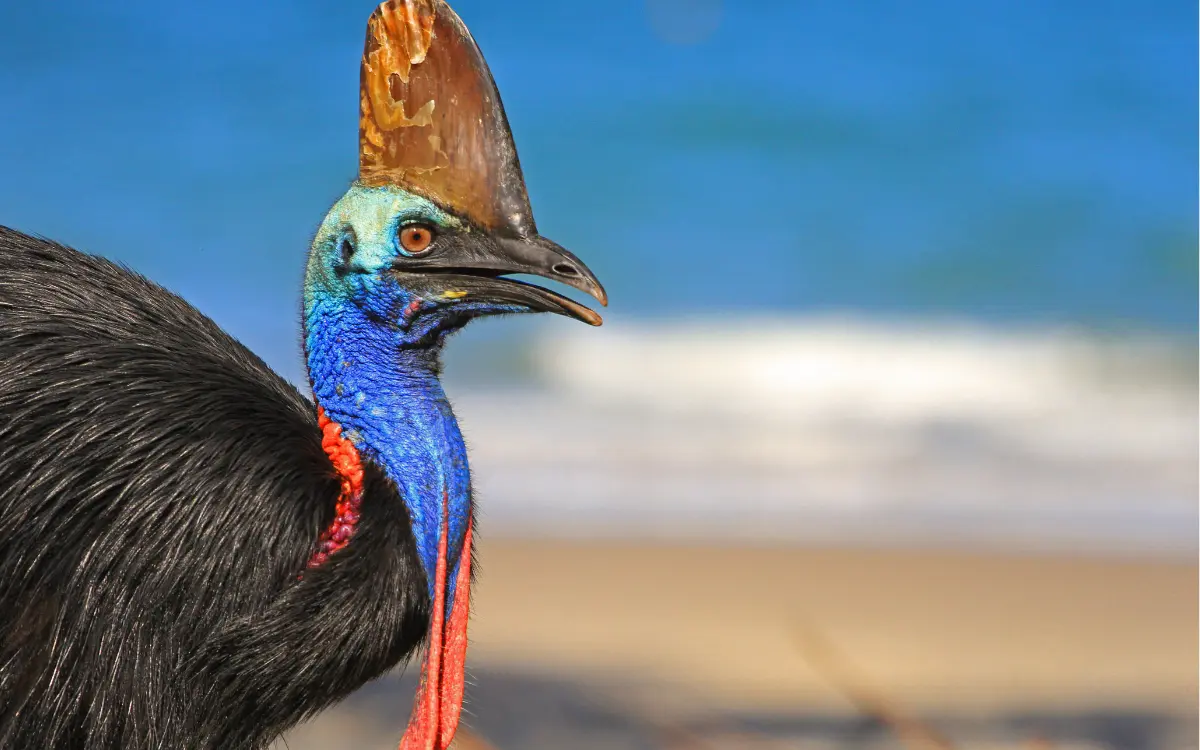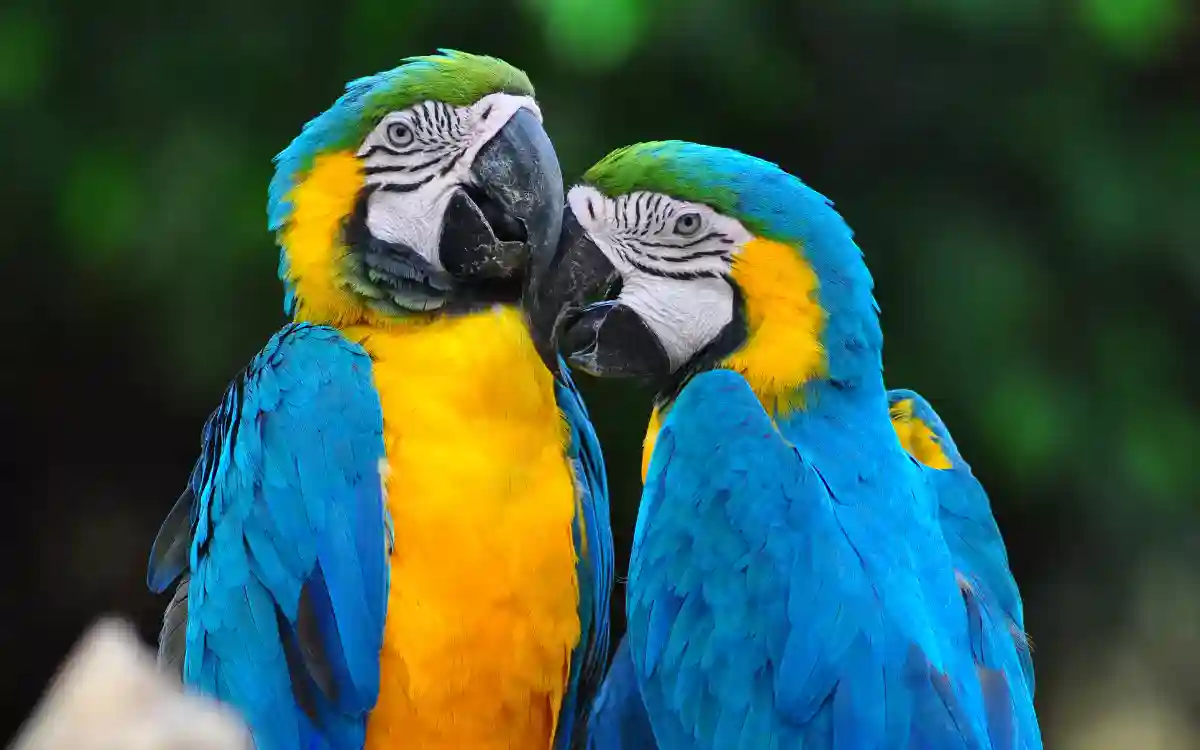Potoo Bird Facts: All You Need To Know
We found the interesting unknown facts of the Potoo with our quick guide! Learn everything about these unique birds, from their nocturnal habits to their incredible camouflage abilities.
Potoo Bird : interesting & unknown Facts
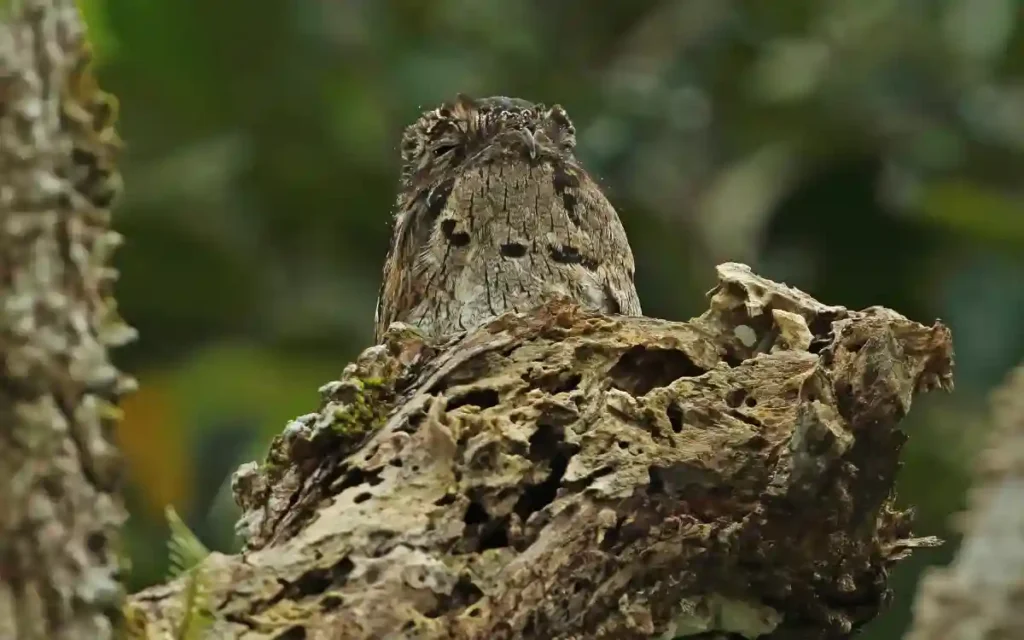
Potoo birds, part of the Nyctibiidae family, represent a unique group of neotropical avian species. Their name might sound funny, but their skills are no laughing matter.
They are known for their incredible camouflage abilities, making them almost invisible among the branches of trees where they reside.
Potoo Bird Facts:
| Potoo Species | Scientific Name | General Location | Season of Observation |
| Rufous Potoo | Nyctibius bracteatus | eastern Peru to the Guianas and southern Venezuela | September to possibly February |
| Great Potoo | Nyctibius grandis | southeastern Mexico to northern Bolivia and southern Brazil | wet season |
| Long-Tailed Potoo | Nyctibius aethereus | Brazil, Venezuela, Guyana, Colombia, Ecuador, Peru, Bolivia, and Paraguay | August to November |
| White-Winged Potoo | Nyctibius leucopterus | Amazon basin of Eastern Venezuela, eastern Peru, the Guianas, and northern Brazil | April to July |
| Andean Potoo | Nyctibius maculosus | westernmost Venezuela, through Colombia, Ecuador, and Peru, just into western Bolivia | February to May |
| Common Potoo | Nyctibius griseus | Bolivia through to Venezuela. | December |
| Northern Potoo | Nyctibius jamaicensis | Central America, northern Mexico south to northwestern Costa Rica | April to July |
Physical Characteristics:
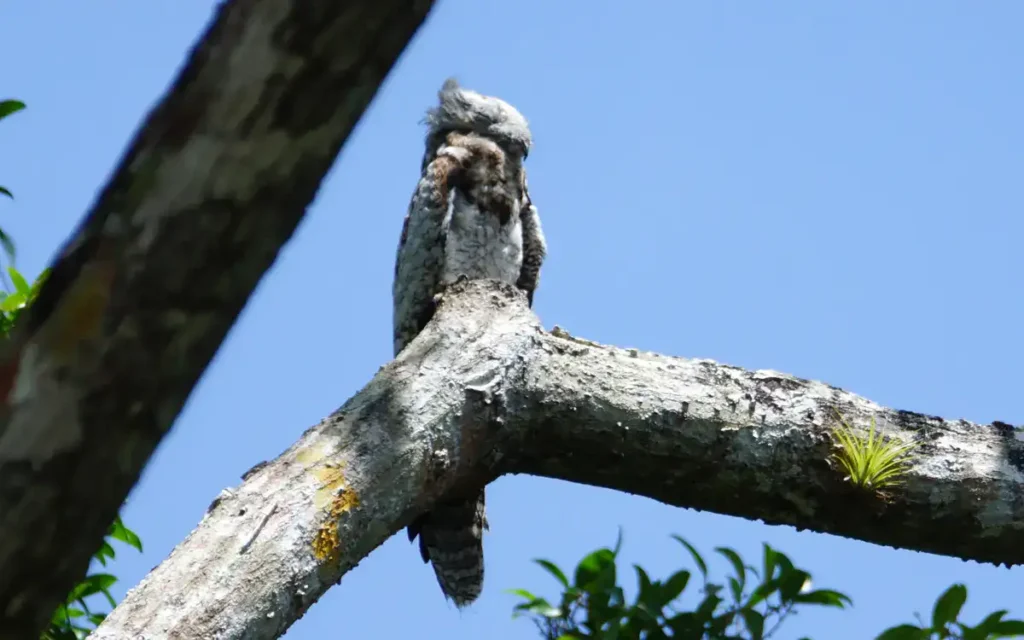
Size Variation Among Species
Potoo birds come in various sizes, with the smallest species measuring around 7 inches and the largest reaching up to 20 inches in length.
Weight Range
Their weight can range from as light as 4 ounces to as heavy as 16 ounces, depending on the species.
Coloration
These birds sport a range of colorations, from pale grey to brownish, perfectly blending in with the tree bark where they roost.
Notable Features
Potoos are known for their enormous eyes and mouths, which play crucial roles in their hunting and night vision.
Read also:-Owl Legs:Fascinating Facts About
Behavior and Lifestyle:
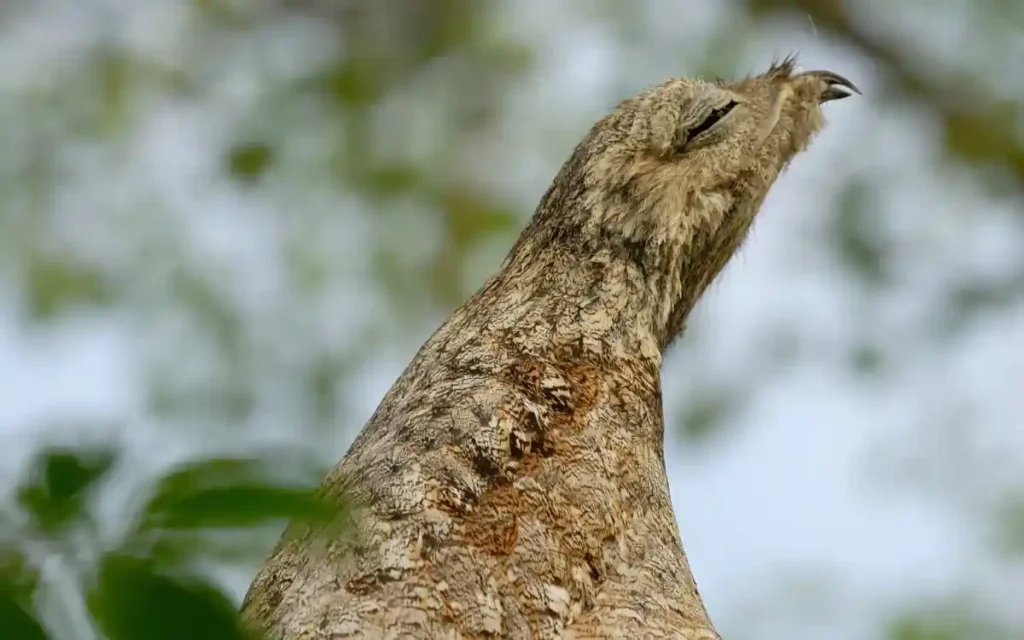
Nocturnal and Insectivorous Nature
Potoo birds are primarily nocturnal, hunting insects under the cover of darkness. Their silent flight and keen eyesight make them efficient predators.
Daytime Behavior
During the day, Potoos exhibit a unique behavior by staying motionless on branches. Their camouflage helps them evade predators, and they resemble broken tree branches.
Hunting Skills
At night, Potoos display impressive hunting skills, capturing flying insects mid-air with their wide mouths.
Interesting Potoo Facts:

Camouflage Mastery
Potoo birds have unparalleled camouflage abilities, blending perfectly with dead branches. They even point their beaks upward, imitating tree stumps.
“Magic Eyes”
These birds possess “magic eyes” that allow them to sense movement with closed eyes, aiding in their nocturnal hunts.
Large Mouths and Eyes
Their large mouths and eyes provide an advantage in hunting, ensuring they can capture prey with precision even in low-light conditions.
Nesting Habits
Potoos lay a single egg in a concealed location, and they are known for their cleanliness in removing their chick’s waste from the nest.
Early Learning
Young Potoos imitate their parents’ camouflage techniques, learning the art of blending into their surroundings.
Strange Calls
Potoos produce a wide range of unique calls, including eerie sounds that have given rise to local myths and legends.
Mythical Associations
Explore the intriguing myths and legends surrounding Potoos in different cultures, where they are sometimes associated with the supernatural.
Rufous Potoo
The smallest Potoo species, the Rufous Potoo, is known for its leaf-like camouflage, making it exceptionally hard to spot.
Adaptation to Human-made Objects
As their natural habitat changes, Potoos have started perching on human-made objects, showcasing their adaptability.
Potoo Fact-File Summary
Let’s summarise what we’ve learned about Potoo birds:
Scientific Classification
- Order: Caprimulgiformes
- Family: Nyctibiidae
7 Types of Potoo Species
There are seven known species of Potoo birds, each with its unique characteristics and distribution:
1. Northern Potoo (Nyctibius jamaicensis):
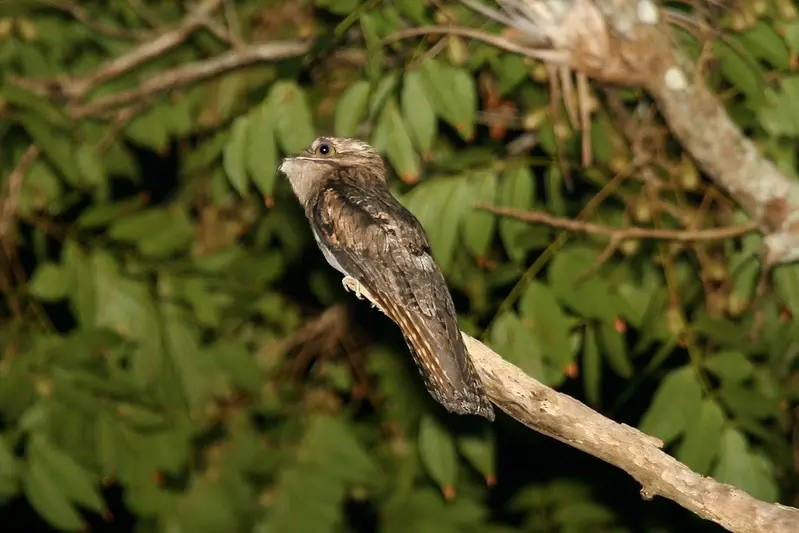
Credit:-Dominic Sherony
Call:-
- Lifespan: 12 to 14 years
- Size: 8 – 10 inches in height, weighing 46 – 58 grams
- Diet: Primarily feeds on butterflies, locusts, grasshoppers, beetles
- Eggs: 1 Egg
2.Common Potoo (Nyctibius griseus):
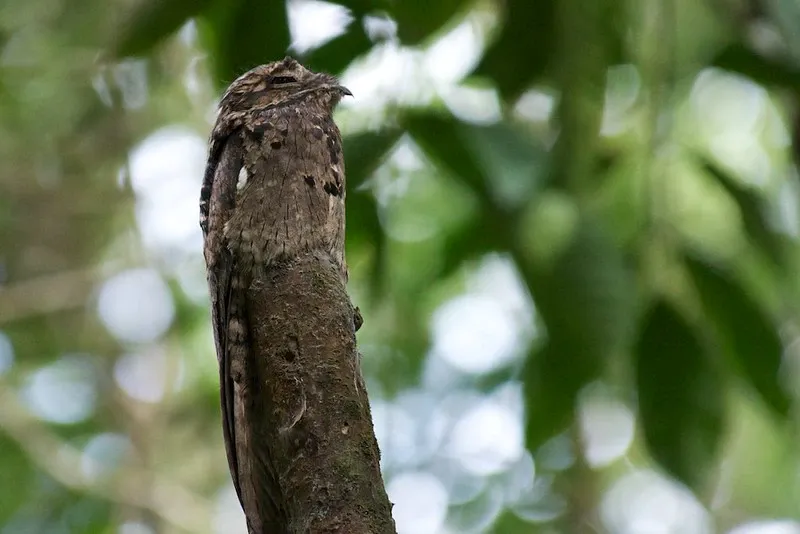
Credit:-Bettina Arrigoni
Call:-
- Lifespan: 12 to 14 years
- Size: 18 – 23 inches in length, with a weight ranging from 360 – 650 grams and a wingspan of 27 – 33 inches.
- Diet: katydids, and occasionally bats,beetles
- Eggs: 1 Egg
Read also: 9 Mockingbird Facts Most special
3.Great Potoo (Nyctibius grandis):
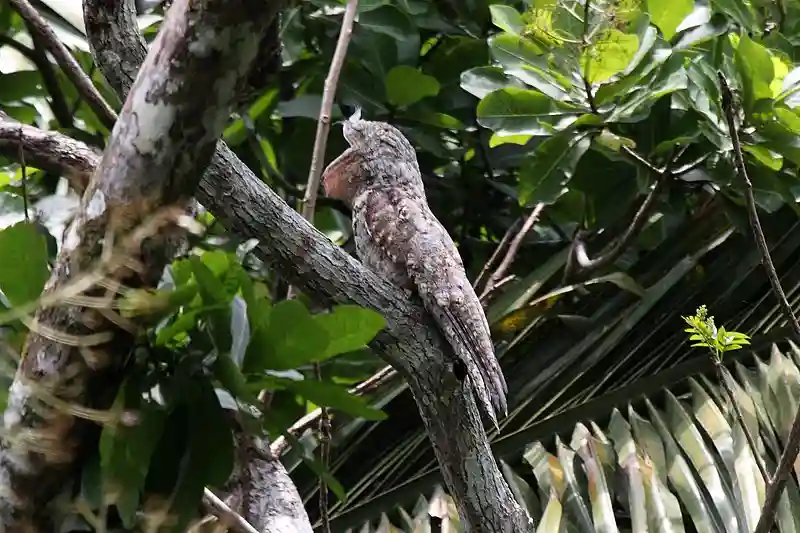
Call:-
- Lifespan: 12 to 14 years
- Size: 18 – 23 inches in length, with a weight ranging from 360 – 650 grams and a wingspan of 27 – 33 inches.
- Diet: Katydids, and occasionally bats,Beetles
- Eggs: 1 Egg
4.Andean Potoo (Nyctibius maculosus):
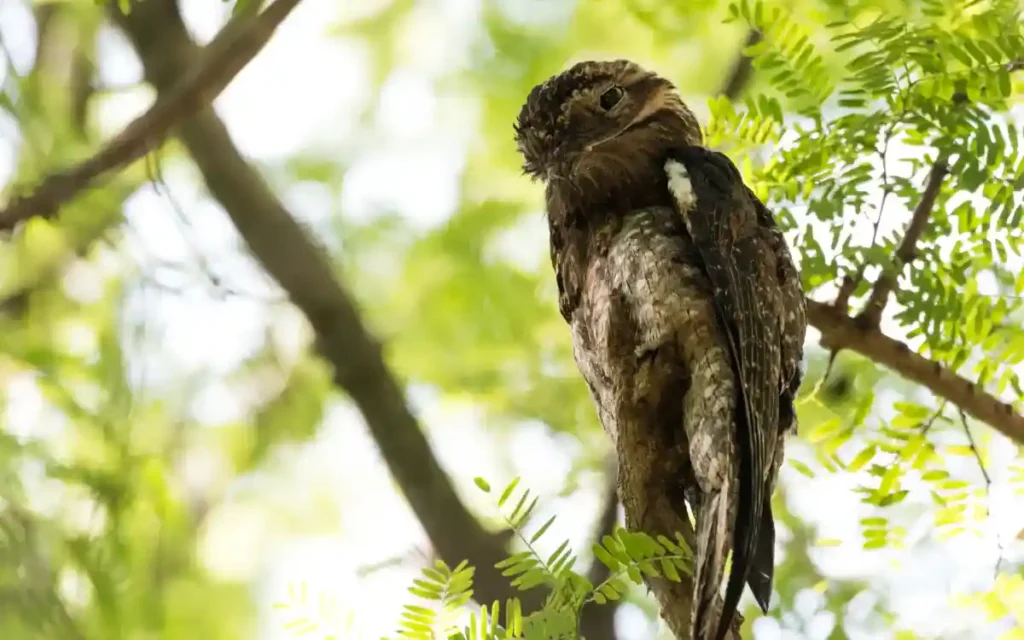
Call:-
- Lifespan: 12 to 14 years
- Size: 13 – 15 inches in length, with a weight range of 145 – 195 grams.
- Diet: large insects, such as beetles and grasshoppers
- Eggs: 1 Egg
5. Long-tailed Potoo (Nyctibius aethereus):
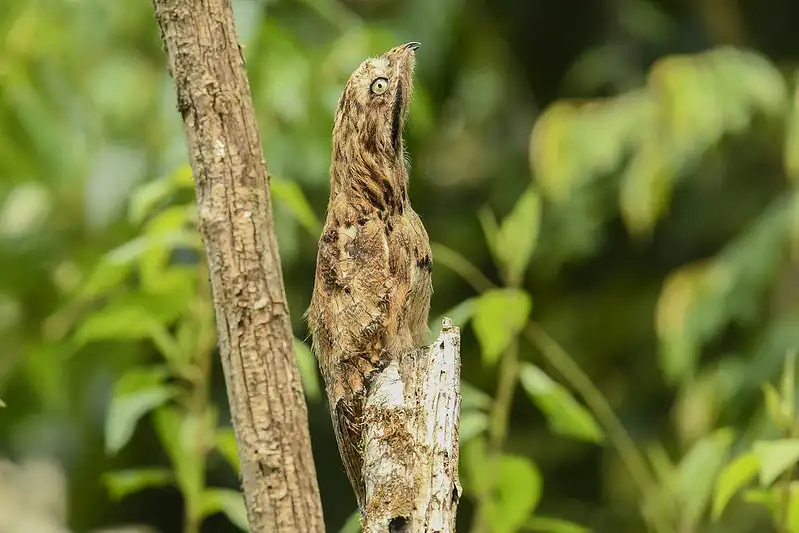
Credit: Patty McGann
Call:-
- Lifespan: 12 to 14 years
- Size: 18 – 20 inches in length, weighing between 280 – 447 grams.
- Diet: butterflies, beetles, and flying termites
- Eggs: 1 Egg
6. White-winged Potoo (Nyctibius leucopterus):
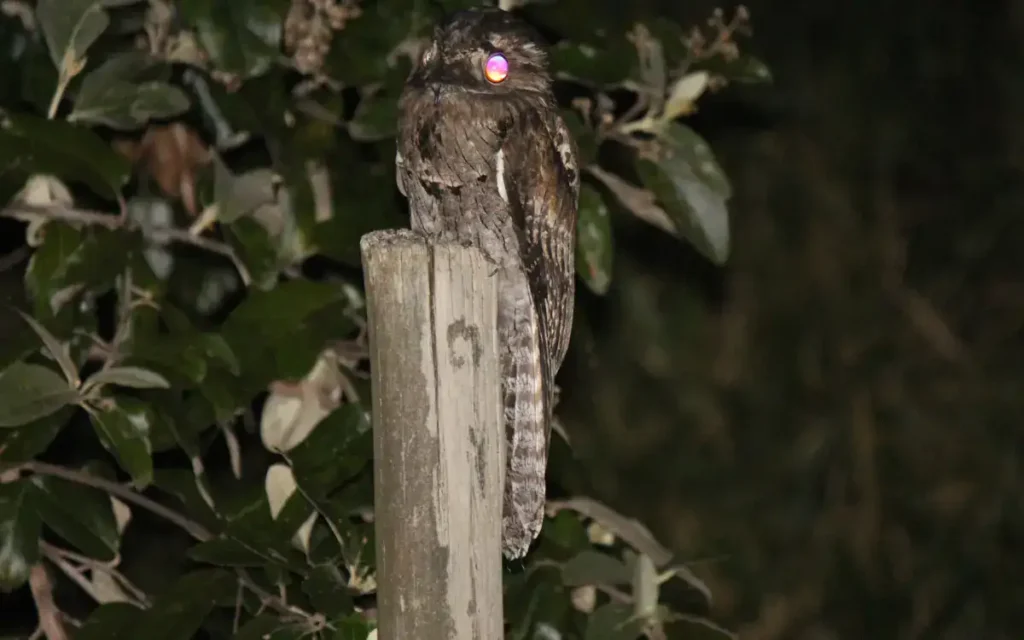
Call:-
- Lifespan: 12 to 14 years
- Size: Measures 9 – 11 inches in length and weighs 77 – 85 grams.
- Diet: Beetles
- Eggs: 1 Egg
7.Rufous Potoo (Nyctibius bracteatus):
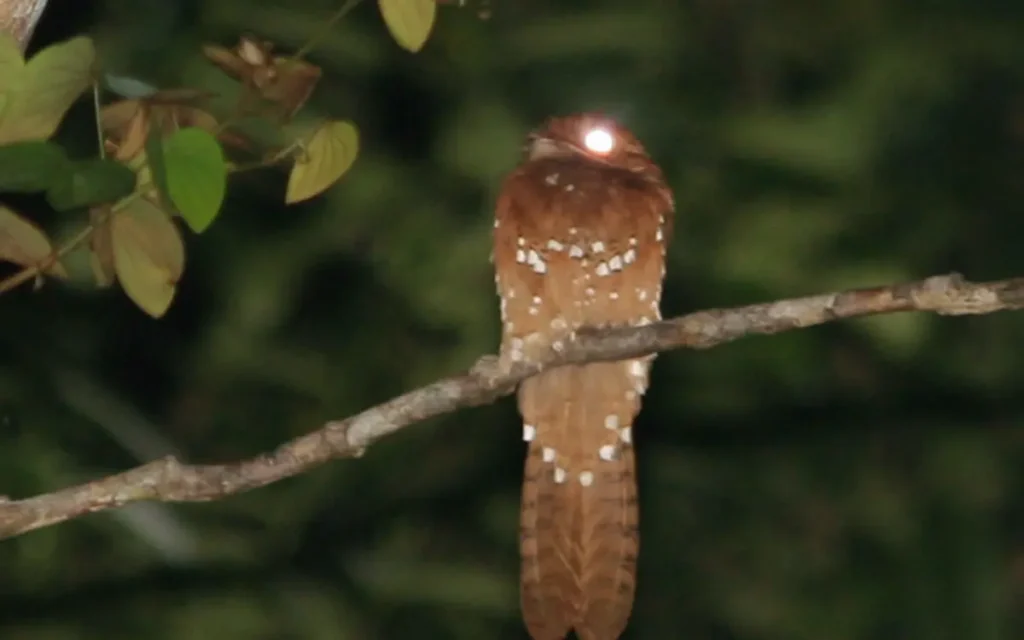
Credit: Marcel Holyoak
Call:-
- Lifespan: 12 to 14 years
- Size: 8 – 10 inches in height, weighing 46 – 58 grams
- Diet: Beetles, locusts, grasshoppers, and crickets
- Eggs: 1 Egg
FAQs:
Q: Are Potoo birds real?
Yes, Potoo birds are indeed real. They are neotropical birds belonging to the family Nyctibiidae and are known for their exceptional camouflage skills.
Q: Do Potoo birds really blend with trees?
Absolutely! Potoo birds are masters of camouflage. They blend seamlessly with tree branches, often resembling dead stumps or broken branches.
Q: Are Potoo birds endangered?
While not all Potoo species are considered endangered, some face threats due to habitat loss and deforestation. Conservation efforts are crucial to protect their populations.
Q: Why are Potoo birds called “magic eyes”?
Potoo birds are called “magic eyes” because they can sense movement with closed eyes, a unique adaptation that aids them in hunting.
Q: What is the significance of Potoo bird calls?
Potoo bird calls are unique and eerie, often playing a role in local myths and legends. They contribute to the mystique surrounding these birds.
Q: How can I spot a Potoo bird?
Spotting a Potoo bird can be challenging due to their camouflage, but keen observers may locate them during their nocturnal hunts or by recognizing their unique calls.
Conclusion:
The Potoo is a remarkable bird with amazing camouflage skills and nocturnal behavior. It is truly a special creature of the night that surprises and delights bird enthusiasts.


